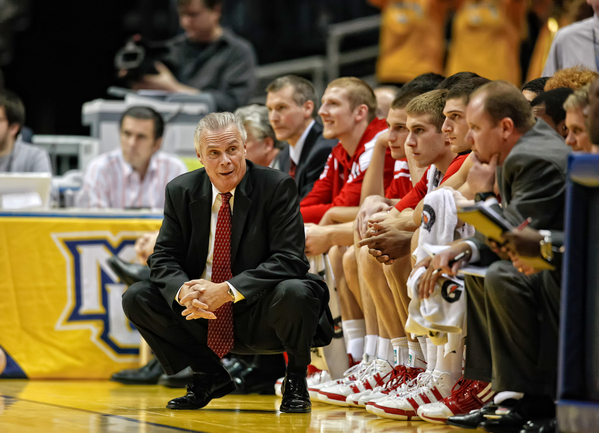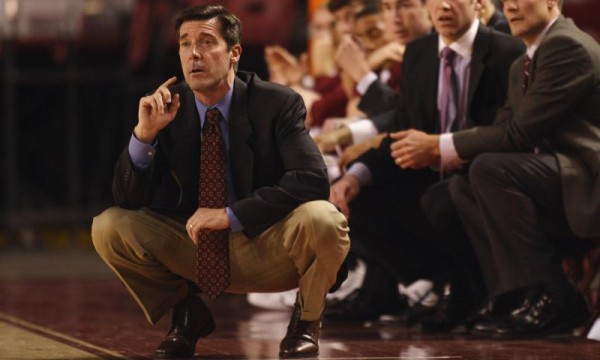Behind the Numbers: Slow and Steady and Sometimes Weird
Posted by KCarpenter on January 26th, 2011Kellen Carpenter is an RTC contributor.
This is my favorite part of the college basketball season. Everything is more certain, yet still mutable: we know where things stand, but for most, it’s not too late for a strong push to finish the season. We don’t have to rely on pre-season guesswork or early returns: we have an idea of the mettle of most teams. The hype around fall flavors like Kansas State has been forgotten, and instead, we now read up on San Diego State. Here is the part of the season where we have taken stock of the landscape, the prologue is over, and now, we get to the good stuff: the build-up to conference championships and March confrontations. That said, the landscape of college basketball is as interesting as it’s ever been. It would be wrong of us to move along too quickly without stopping to admire some of the interesting and stylistically odd teams that this season has given us. And speaking of moving too quickly, let’s take some time to look at some of the more interesting slow-as-Christmas teams in the country.
In Madison, they are, as always, playing Bo Ryan’s brand of basketball, but this year the team has achieved a special level of Ryan-ness. With an emphasis on fundamentals, this Wisconsin team is the pride of sanctimonious gym teachers across this fair land. The team rarely ever turns the ball over, easily leading the nation by surrendering the ball only 13.5% of the time. As a team, the Badgers are the best free throw shooting team in the nation, making 81.9% of their free throws. With those two distinctions, Wisconsin is now, if it wasn’t already, officially, the epitome of dad-basketball across the nation. Unfortunately, the meticulous style of play also means that Wisconsin leads the nation in one more category: slowest pace. The Badgers average 58 father-pleasing possessions a game.
At Samford, they are playing slowly as well, and while the style of play isn’t exactly dad-pleasing, it’s certainly interesting. It’s mostly confusing, but technically superlative in quite a few ways. Samford leads the nation in assist-to-field-goal ratio, which may or may not mean anything. They also easily lead the nation in proportion of three point shots taken, shooting 56.1% of their shots from beyond the arc. They are also the worst team in the nation at offensive rebounding, grabbing only 19.1% of available boards. I have not seen Samford play, but from the numbers I’m picking up on the kind of mad-genius idea that few coaches and teams have the stomach to implement.
It appears that Samford coach Jimmy Tillette has enacted an interesting theoretical scheme to minimize the team’s weaknesses and maximize their strengths. A typical possession, judging from the numbers, seems to consist of the offense moving the ball as best they can until the defense is sufficiently scrambled and there is an opportunity to shoot an open three. As soon as Samford takes the shot, they scramble back on defense, forgoing the chance to rebound to better set up the defense. This strategy is pretty clever for a couple of reasons: Slowing the pace almost always benefits the underdog, because it effectively magnifies normal variation in shooting. Three-point shooting, which the Bulldogs are relatively good at (35.2%), allows them to maximize their leverage on this variance. Forsaking offensive rebounding is a calculated gamble that a team whose tallest starter is 6’6 would be better served getting back on defense than crashing the boards. All of these choices make some degree of sense in a vacuum and you can’t help but admire Jimmy Tillette’s attempts to make the best of what he has, but Samford is currently 2-6 in the Southern Conference.
It really isn’t a terrible idea and I’m surprised more coaches haven’t tried similar gambits to leverage their chances to win. One coach who seems intent on utilizing these strategies is Joe Scott at Denver University. Like Samford, Denver plays at a slow pace (3rd slowest in Division I), shoots a lot of threes (7th most), and barely ever rebounds offensively (2nd worst). Unlike Samford, Denver has been hitting threes at an outstanding rate. As a team, the Pioneers are shooting 41.6% from beyond the arc, making them the 6th best long-distance shooters in college basketball, and 7th best in overall effective field goal percentage. Good shooting makes all the difference: Denver is 6-1 in Sun Belt play.
The other thing that separates Denver from Samford is an extra defensive tactic: ridiculous ball pressure. Joe Scott has his players looking to force turnovers on nearly every possession. They are pretty good at it too, forcing a turnover on 24.3% of possessions. Unfortunately, these possessions aren’t free. Denver fouls a lot. That’s actually a bit of an understatement. Denver fouls more than any other team in college basketball. They have a 62.1% opponent free throw to field goal ratio, which is something that you don’t typically see in teams that are winning games. While, I’m sure Joe Scott thinks that he’s making a smart trade-off in getting those extra possessions, I don’t know if he is making the right call. Remember, the team that’s on the other end of the opponent free throw ratio to field goal ratio is just some little school in the Midwest called Ohio State that’s played reasonably well this season.
And while Wisconsin might match up with Ohio State, I doubt we’ll see Samford pulling off any March upsets, though Denver has a real shot at winning its conference and getting its chance at surprising people come tournament time. For some, playing slow is a conscious choice, a mere stylistic preference. For other teams, however, it’s a lever, a gamble, and a means to an end. If it works, we’ll see the payoff in March.











































